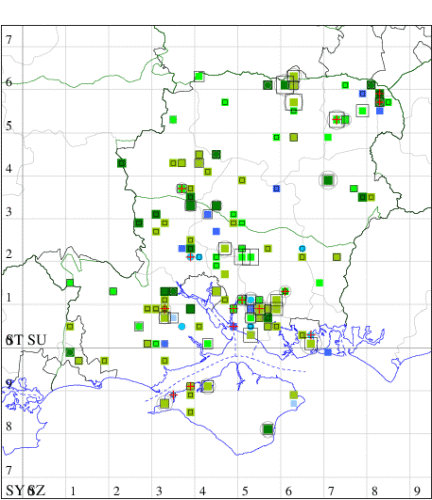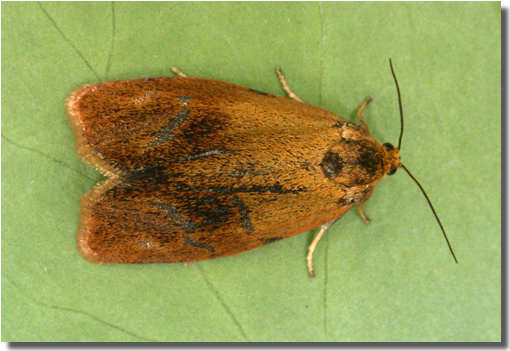Ptycholoma lecheana
Checklist Number49.022 [B&F: 1000]
Verification
Record will be accepted (subject to date and location checks)
Classification
| Family: | Tortricidae |
| Subfamily: | Tortricinae |
| Genus: | Ptycholoma |
| Species: | lecheana |
| Authority: | (Linnaeus, 1758) |
Common in woodland and orchards throughout much of the British Isles. In Hampshire and on the Isle of Wight widespread and fairly common in woodland throughout the county, but less common on the Island. Wingspan 16-22 mm. Distinguished by the generally dark coloration of the fore- and hindwings, the shining metallic edging of the median fascia and the metallic scaling in the apical area of the forewing [Bradley]. Larva feeds on deciduous trees and shrubs, living within a spun or rolled leaf, over-wintering in a cocoon.


The abundance in each month is indicated as follows:
 No records
No records Very occasional
Very occasional Irregular
Irregular Uncommon
Uncommon Off-peak, but not unusual
Off-peak, but not unusual Off-peak, but not unusual
Off-peak, but not unusual Main flight time
Main flight time| J | F | M | A | M | J | J | A | S | O | N | D | |
|---|---|---|---|---|---|---|---|---|---|---|---|---|
| Adult |  |  |  |  |  |  |  |  |  |  |  |  |
| Larval |  |  |  |  |  |  |  |  |  |  |  |  |







